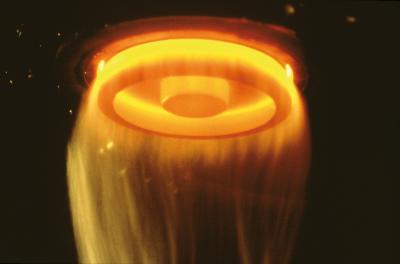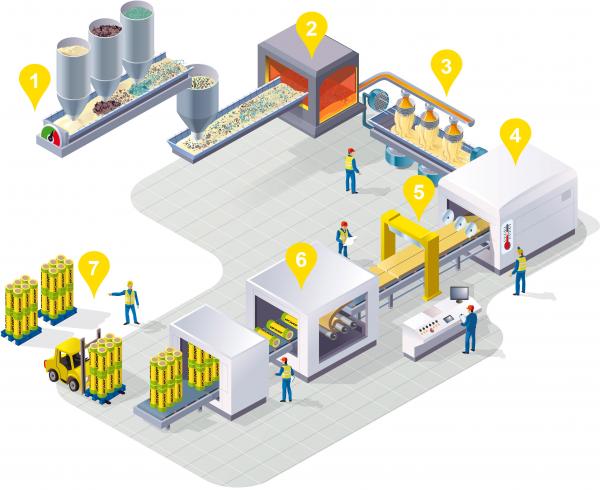ISOVER glass wool is a high-tech product, mainly made from sand and recycled glass; we have constantly improved its features and performances.Its exceptional thermal properties contribute to save energy and combat climate change. Its porous and elastic structure absorbs noise in the air and offers acoustic correction inside premises. Incombustible by nature, ISOVER glass wool does not fuel fire or propagate flames.

The seven stages in the glass wool manufacturing process.

Glass wool process
Arthur Raihno
1. BATCH: Glass wool is made mainly of sand, soda-ash, limestone and recycled glass; stored in silos, they are weighed, mixed and poured into a furnace.
2. MELTING: The mixture is then melted at a temperature exceeding 1,400°C in an electric or gas furnace.
3. FIBERIZING: The liquid glass passes via a feeder to a fiberizing machine, where it is propelled through tiny holes by a centrifugal spinner – creating the fibers. These are sprayed with a binder and shaped into a blanket.
4. FORMING: Then the blanket passes through a curing oven. During this process, the blanket can be compressed to achieve its final thickness.
5. CUTTING: The blanket is then cut to the required width. Off-cuts are recycled. A facing can eventually be glued to the blanket..
6. PACKAGING: The end of the line is generally equipped with a rolling machine for mats and a stacking machine for boards.
7. PALLETIZATION: The glass wool can be compressed to up to a tenth of its volume. A total of 36 rolls of glass can be packed onto a single pallet.
